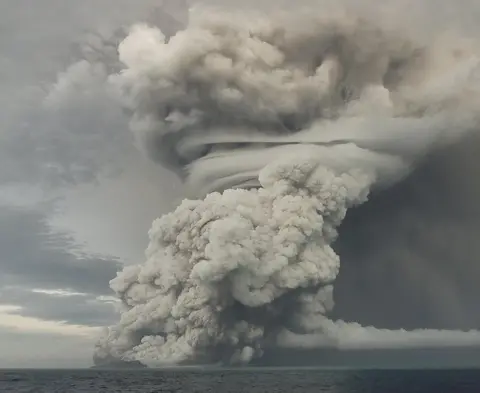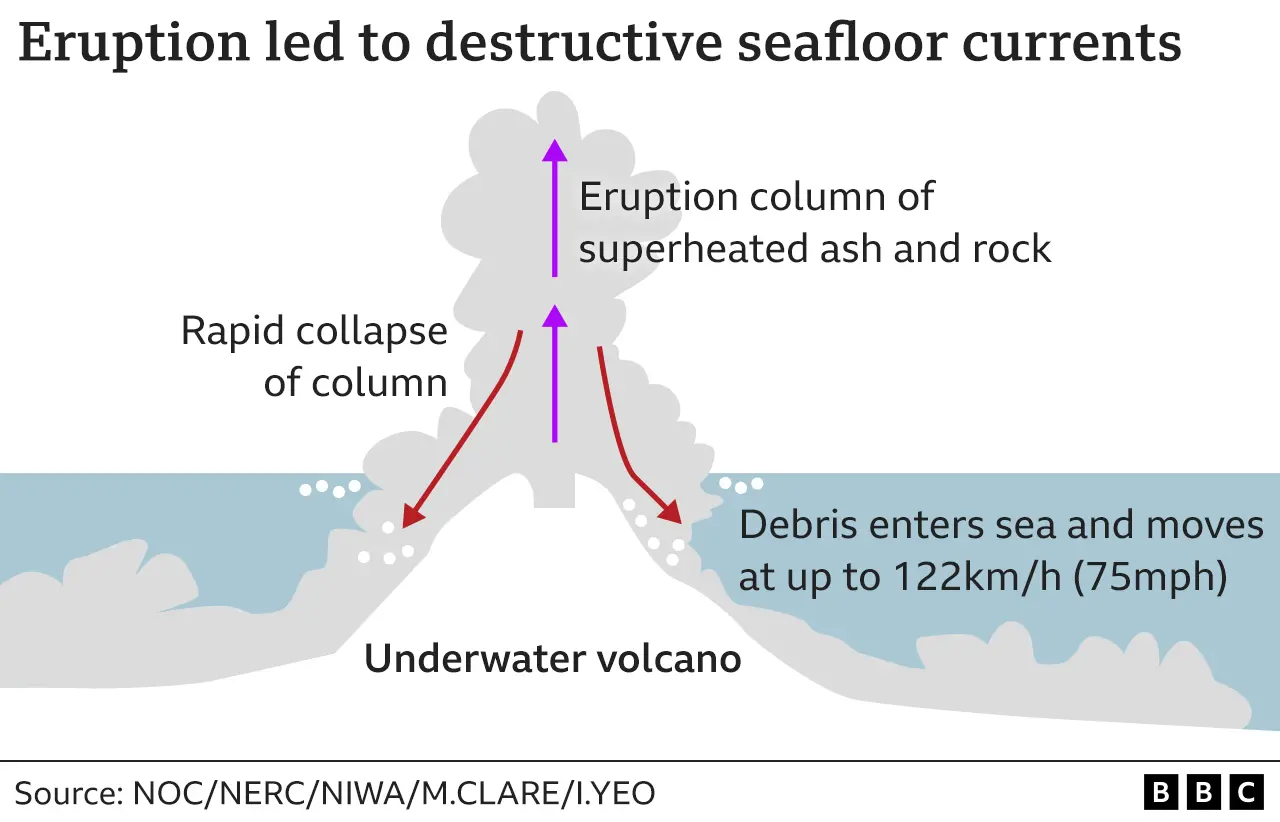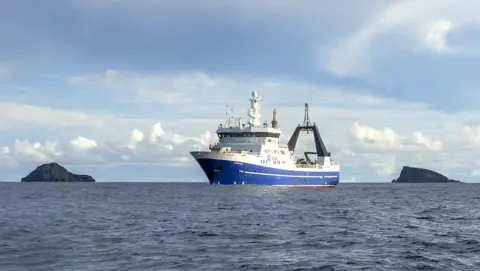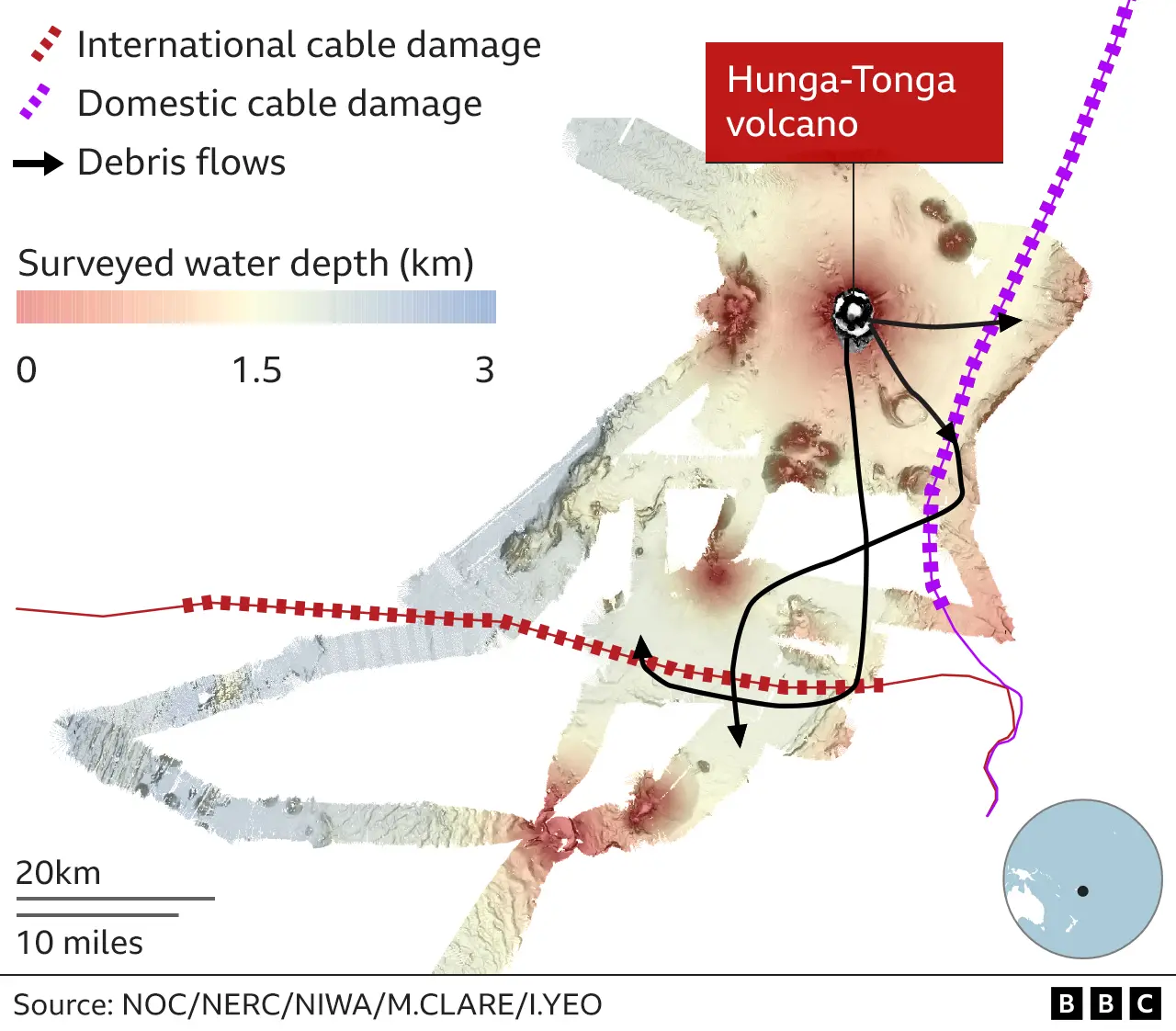Tonga volcano triggered seafloor debris stampede

 Tonga Geological Services
Tonga Geological ServicesLast year's Tonga volcanic eruption produced the fastest underwater flows ever recorded, scientists say.
Huge volumes of rock, ash and mud were clocked moving across the ocean floor at speeds of up to 122km/h (75mph).
These "density currents", as they're known, snapped long sections of telecommunications cabling, cutting the Pacific kingdom's link to the global internet.
They also smothered and killed all sealife in their path.
It's another example of the prodigious scale of the 15 January eruption.
The underwater volcano called Hunga-Tonga Hunga-Ha'apai is already in the record books for:
- the height of its eruption plume, which rose half way to space (58km)
- producing the biggest atmospheric disturbance in instrumented history
- triggering the most intense lightning storm - 2,600 flashes per minute

Scientists knew most of the roughly six cubic km of rock and ash thrown into the sky by the volcano must have come back down and spread out across the ocean floor, but now they've been able to map and measure its journey underwater and say something about its speed.
They did this by surveying and sampling the seafloor to see where the deposits went, and by comparing the timing of the eruption with the timing of the cable breaks.
There were two cables operational near the volcano, one connecting Tonga to the global internet and the other distributing this service to local islands.
The domestic cable, 50km from Hunga-Tonga, was the first to go down, 15 minutes after the onset of the main eruptive event. The international cable, some 70km away, followed about an hour later.
 NIWA-Nippon Foundation/R.Parsons-King
NIWA-Nippon Foundation/R.Parsons-KingResearchers, led from the UK's National Oceanography Centre, say their investigations indicate the flow that broke the local submarine cable must have been moving at 73-122km/h (45-75mph); and even at the greater distance of the international cable, a speed of 47-51km/h (29-32mph) is realistic.
"These flows hit the sweet spot for going as fast as they possibly could," said Dr Mike Clare, who is a co-lead author on a report in this week's Science Magazine.
"The rock and ash in the high eruption column fell down and went into the ocean like a jet. When this material hit the 40-degree slopes of the volcano flanks, it bit off chunks of the volcano and became even more dense. It walloped the domestic cable, was steered around corners and then walloped the international cable," he told the Science In Action programme on the BBC World Service.

To put these speeds in the context of other density currents - a snow avalanche on a mountain might get up to 250km/h; and the classic debris flow from a land volcano, called a pyroclastic flow, can reach up to 700km/h. But these are phenomena in which the suspended particles are pushing through air.
For the Tonga submarine flows, they were pushing through water, which speaks to their density and power.
There are implications in what happened at Hunga-Tonga for the companies that operate the global submarine cable network.
More than 99% of all data traffic between continents goes through these connections, including daily money transfers to the value of trillions of dollars.

In the Pacific and the Caribbean, especially, the cables pass close to many underwater volcanoes.
Although the international cable at Tonga was repaired in five weeks, it took 18 months to replace the domestic cable.
"In part that was because the length of new cabling simply didn't exist. They needed to manufacture 105km," explained co-author Dr Isobel Yeo.
"There needs to be investment in the availability of repair cable, and also in low-level communications satellites to build resilience."
And she added: "Hunga-Tonga highlights once again the need for better seafloor mapping. We don't know what's out there, and what we do know we don't monitor."

The deep scours dug out of the flanks of the volcano by the energetic flows are evident on other submarine volcanoes around the world, indicating the explosive event of the type that occurred in January 2022 may not be as rare as we think.
For their report, Drs Clare and Yoe used survey data gathered around the volcano by the Research Vessel (RV) Tangaroa, which is operated by New Zealand's National Institute of Water and Atmospheric (NIWA) research.
Core samples pulled up from the flows are held at the British Ocean Sediment Core Research Facility (Boscorf) on the NOC campus in Southampton.


